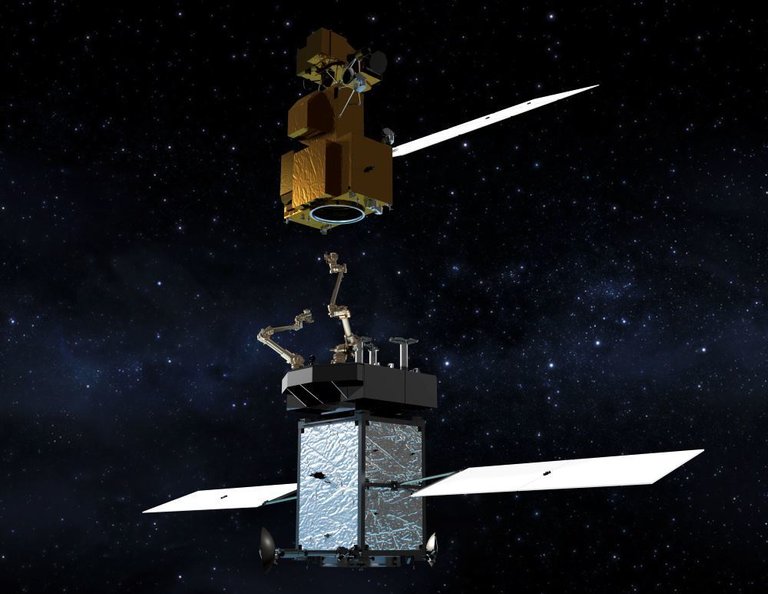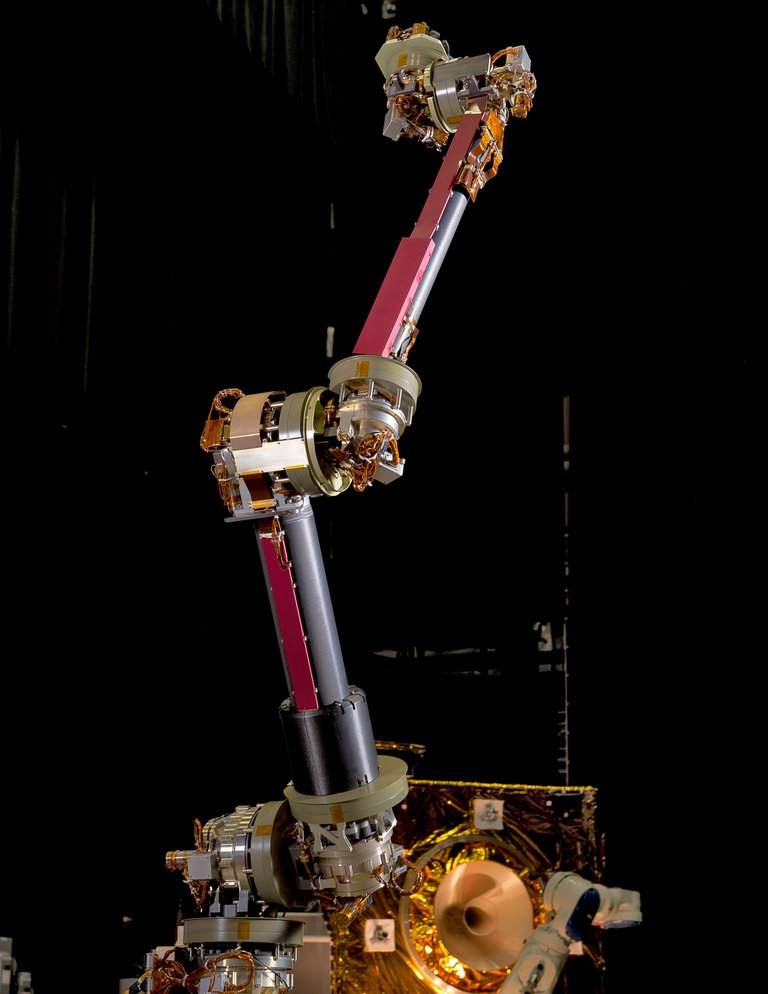
That could look like in space, the satellite meeting, which is necessary to fuel or technical inspection, and service unit
New technologies and methods of their use gradually closer until recently seemed so distant future. A study of the solar system, its many planets, satellites and other objects - no longer a fantasy, but today. To spacecraft studying the solar system, can work over the long term, experts from NASA offered an interesting idea: automatic satellite, which will provide service support to other satellites.
So far, it is only about refueling spacecraft with further expansion "tanker" functionality. Many such devices, to develop a fuel does not remain anything else how to hang in space without a specific purpose and need, clogging up a near-earth orbit. The mission of the probe "Cassini", for example, have to complete it due to lack of fuel - soon the satellite will go into the upper layers of the atmosphere of Saturn. But over time things can change: Now, NASA is working on a mission Restore-L.
The purpose of the mission, as already mentioned - the development of an automatic device capable to perform on the go refuel other satellites. After the satellite-refueling tankers will test its readiness in low orbit. The first candidate to refuel - the government's US satellite Landsat 7.
But before the work as a tanker, Restore-L performs several tasks necessary for the successful implementation of future NASA missions. One of them - the study of human Mars.
Restore-L - a high-tech device, which includes, for example, an autonomous navigation system of the latest developments. In addition, there are multi-function manipulator and the appropriate software. This whole set is complemented tools to carry out refueling of other satellites. To keep the fuel in a suitable state of the satellite is equipped with an automatic monitoring system.
In the future, scientists will try to carry out a number of projects using the Restore-L. For example, manufacturing and assembly in orbit special fuel storage, maintenance orbiting observatories, monitoring and management of space debris. Some of the technology used to create the device will work during the planned NASA mission to asteroid smuggle to the Moon. This mission is called Asteroid Redirect Mission.

The robotic arm of the satellite
Automatic system, developed for Asteroid Redirect Mission, will contain many electronic components and systems to be placed in the Restore-L. First of all, we are talking about avionics, autonomous navigation system, a number of program elements and other systems. In addition, the mission provides an opportunity to refuel the main unit "asteroid probe" during the flight. New observatory Wide-Field Infrared Survey Telescope (WFIRST) will also refuel fuel using Restore-L.
Many of the technologies created by NASA engineers now be run in first on the Restore-L, and then be transferred to other devices. If all goes well, the study of outer space go even faster.
«Restore-L has to deliver us from the paradigm of" companion at a time "," - says Frank Tsepollina, one of the service members of the project team for the telescope "Hubble".
Now Tsepollina uses previously obtained experience to implement Restore-L mission. He believes that the new satellite systems using a robot to monitor, update, and refueling expensive orbiters. As a result, space missions will become less expensive and more effective.
Refuelling can be carried out not only for space vehicles that are engaged in space exploration. Operators of commercial satellites will also be able to prolong their life by refueling and maintenance directly in space. Companies will be able to launch satellites with minimal fuel to facilitate the launch vehicle and reduce the cost of launch. But after the release of the system in orbit it will fill the fuel Restore-L or other similar device (if the device will show their effectiveness, NASA could consider launching similar probes).
Some companies have already expressed interest in testing new systems and related technologies. Restore-L suggests a significant extension of the operation of spacecraft. But, as already mentioned, it is not only about refueling satellites, an important element - the test "in the field" new technology.
nice to know about space garage, upvoted and followed.
thanks!
This post has been ranked within the top 25 most undervalued posts in the second half of Dec 06. We estimate that this post is undervalued by $18.88 as compared to a scenario in which every voter had an equal say.
See the full rankings and details in The Daily Tribune: Dec 06 - Part II. You can also read about some of our methodology, data analysis and technical details in our initial post.
If you are the author and would prefer not to receive these comments, simply reply "Stop" to this comment.